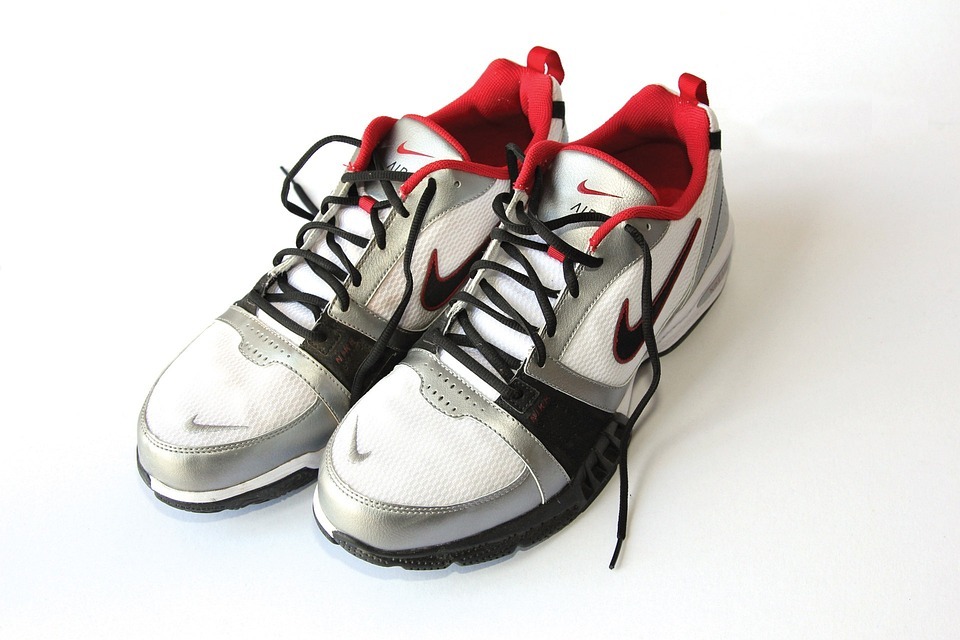Nike is considered one of the most popular brands of sports shoes in the world, and some of the reasons why the brand is very popular are because of its shoe designs and cushioning technologies. Over the years, Nike has designed and produced innovative cushioning technologies that allow their shoes to feel more comfortable and supportive for different kinds of sports.
While many people today know Nike for its Air cushioning technology, there are only a few that know about the other obscure or less popular cushioning systems created by the brand. One of these less popular cushion systems is Nike Shox. What is Nike Shox? And how is it different from Nike Air? Let us find out as we take a closer look at the Nike Shox technology system.
What is Nike Shox?
Nike Shox is a support system that was utilized as a midsole cushion technology for several Nike sports shoes during the early 2000s. The Nike Shox system features four or more circular columns in the midsole that look like springs at first glance. Four circular columns, which are primarily made of polyurethane or PU, are incorporated into the midsole in a square formation for better balance and stability. The four circular columns are typically placed on the heel section of the midsole, although additional columns can be added to the midfoot and forefoot sections.
When the Shox support system was released in 2000, Nike marketed it as an effective technology that can absorb impact from heel strikes (which happens when your heels land first on the ground before your forefoot while running) while also having a “spring back” features that propels your feet forward for faster runs or movements.
Brief History of the Nike Shox System
It was in 1984 when resident Nike footwear designer Bruce Kilgore (who is also known for designing the classic Air Force 1 shoe) began his research on a new cushioning and support system for the brand. During his research, Kilgore became inspired by seeing indoor track sprinters and how they seem to “bounce” whenever their feet touch the surface of the racetrack. This inspiration eventually led to the creation of hollow springs or columns that bounces back after impact. [1]
There are many types of materials that are tested to see which ones can provide the best impact protection and bounce for a shoe’s midsole. Out of all the materials tested, the designers at Nike ultimately decided to incorporate polyurethane as the primary material for the Shox support system. Polyurethane, also known by its acronym PU, is a type of foam that is dense but flexible. This material is also considered one of the most comfortable materials for shoe midsoles.
In 2000, the first Nike Shox running shoe was introduced to the public. While the said support system has already gained traction during its release week, the system skyrocketed in popularity during the 2000 Summer Olympics, when a famous basketball player named Vince Carter (who played for Team USA) dunked on a 7’2” player from Team France while wearing the Nike Shox BB4, which is considered as Carter’s first signature shoe with Nike. The infamous dunk would eventually become known as the “Dunk of Death.” [2] From then on, Vince Carter would become the primary endorser and ambassador for the Nike Shox system.
Difference Between Nike Shox and Nike Air
The Nike Shox would remain one of the main cushioning systems for Nike alongside the Air and the Zoom Air technologies. While Air and Zoom Air are two cushioning systems that use small airbags on the heel or forefoot (and sometimes on both sections) for bounce and impact protection, Nike Shox uses columns or springs that are hollow inside to propel the wearer’s feet forward.
In terms of bounciness, the Shox provides more bounce compared to Air and Zoom Air, although the latter systems offer a more ground feel, as they are lower to the ground and allow the wearer to have quicker diagonal or horizontal movements on the floor. Air and Zoomer have a better ground feel since they are significantly thinner than the Shox columns and are usually found at the bottom or at the top of the midsole.
Because Nike Air is significantly more popular than Nike Shox (and even arguably easier to manufacture since it can be installed or applied to any Nike shoe with ease), Nike decided to end the production of most Nike Shox shoes in 2017. However, reruns or rereleases of classic Nike Shox shoes, like Vince Carter’s Nike Shox BB4, are still implemented by Nike today.
Commemoration of the Nike Shox BB4
The most known shoe in the Nike Shox line, the Nike Shox BB4, was rereleased on June 29, 2019, to commemorate Vince Carter, who retired the following year after playing for 22 seasons in the NBA (National Basketball Association). The first colorway that was released for the Nike Shox BB4 was the “Olympics” colorway, which he wore during the 2000 Summer Olympics. [3] Other colorways that were rereleased between 2019 and 2020 include the “Raptors” colorway that paid homage to Vince Carter’s first NBA team, the Toronto Raptors, and the first colorway for the Nike Shox BB4, Black/Metallic Silver/Lapis.
These are all the simplest things you need to know about the Nike Shox technology system, particularly in its design, use, and history. There are a few Nike Shox shoes that have been rereleased in recent years, so if you want to try this cushioning technology out, you can find them in sporting goods stores and online shops that sell legitimate Nike products.
References
[1] Goldowitz, N. (2017, December 5). A Brief History of the Nike Shox Line. Weartesters. Retrieved March 31, 2023, from https://weartesters.com/brief-history-nike-shox-line/
[2] Rosenberg, J. (2023, February 17). Vince Carter Never Second-Guessed ‘The Dunk of Death’. Esquire. Retrieved March 31, 2023, from https://www.esquire.com/sports/a42916926/vince-carter-slam-dunk-contest-interview/
[3] Nightwing2303. (2019, September 2). An Official Look at the Nike SHOX BB4 ‘Olympics’. Weartesters. Retrieved March 31, 2023, from https://weartesters.com/an-official-look-at-the-nike-shox-bb4-olympics/

